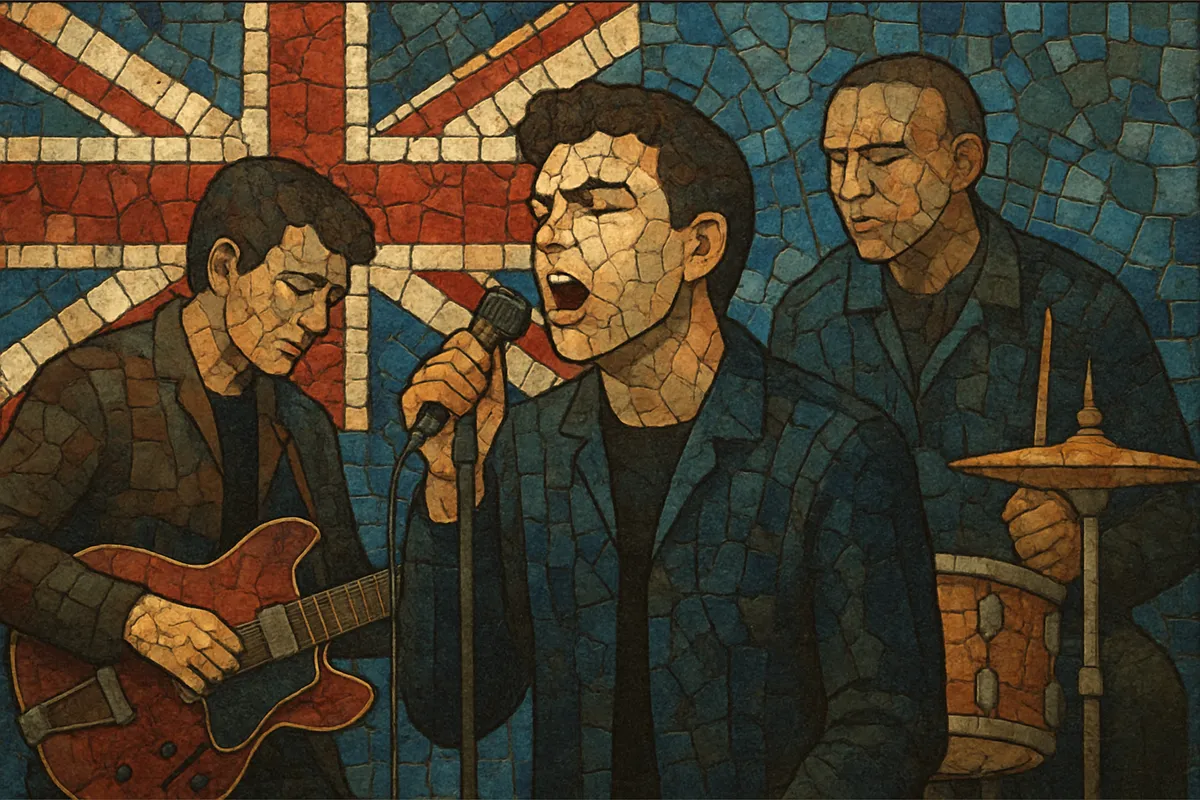
British rhythm & blues is the United Kingdom’s early-1960s reinterpretation of American rhythm and blues and electric Chicago blues, performed by beat-era groups with louder amplification, a tougher backbeat, and club-ready energy.
The style centers on electric guitar riffs, harmonica leads, driving bass-and-drum grooves, and raw, sometimes shouted vocals. Repertoires leaned heavily on covers of Chess and Vee-Jay artists (Muddy Waters, Howlin’ Wolf, Bo Diddley, Chuck Berry) alongside original songs built from I–IV–V blues frameworks. It is tightly linked to London’s club circuit and the mod scene, where fast tempos, stomping shuffles, and an emphasis on danceable grooves defined the sound.
Compared to American R&B and blues, British R&B is generally more aggressive and amplified, foregrounding attack, repetition, and live immediacy. It became a springboard for blues rock, psychedelic rock, hard rock, and eventually the UK pub-rock to punk lineage.
The British skiffle boom and trad-jazz/blues enthusiasms of the late 1950s primed young UK musicians to explore American R&B and Chicago blues. London’s Ealing Club (opened 1962) became a crucible, with Alexis Korner and Cyril Davies’ Blues Incorporated offering a template: amplified guitars, harmonica, 12‑bar forms, and a hard backbeat suited to crowded, sweaty rooms.
Groups such as The Rolling Stones, The Animals, The Yardbirds, Them, The Pretty Things, Manfred Mann, and The Spencer Davis Group carried the style from clubs like the Marquee and Crawdaddy onto the charts. Their hit covers and R&B‑rooted originals brought American blues repertoire to a mass youth audience, both in the UK and the US. This transatlantic success fed back into American garage rock, as countless US teen bands emulated the British groups’ rough, riff‑driven attack.
As improvisation and volume increased, British R&B musicians stretched song forms and guitar tones. John Mayall & the Bluesbreakers became a training ground (with Eric Clapton, Peter Green, and Mick Taylor), while The Yardbirds incubated Jeff Beck and Jimmy Page. The result was a broadening into blues rock and psychedelic rock, with heavier rhythms and more assertive amplification that would soon crystalize into hard rock.
In the 1970s, bands like Dr. Feelgood revived the concise, high‑energy R&B feel in pubs, directly influencing punk’s economy and attitude. The genre’s emphasis on groove, riff, and live urgency underpins later UK rock lineages—from mod and garage revivals to hard rock and even early heavy metal. British R&B remains a gateway through which generations discovered the blues and converted it into distinctly British rock expressions.

